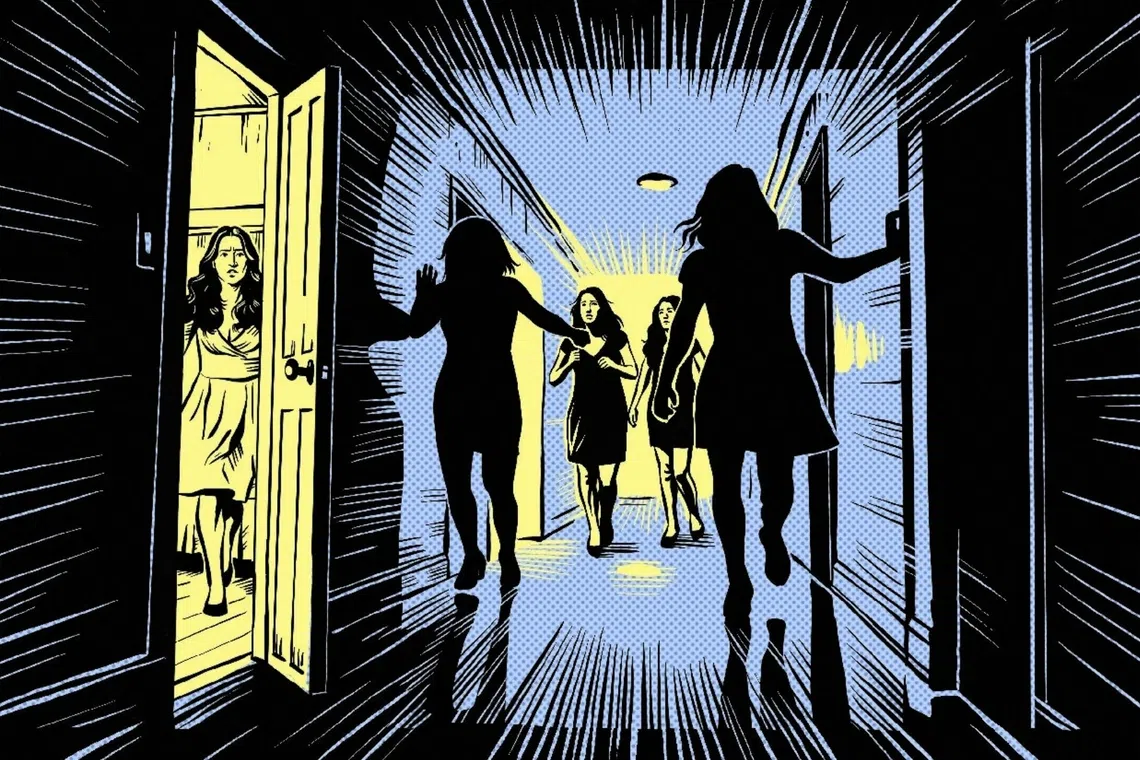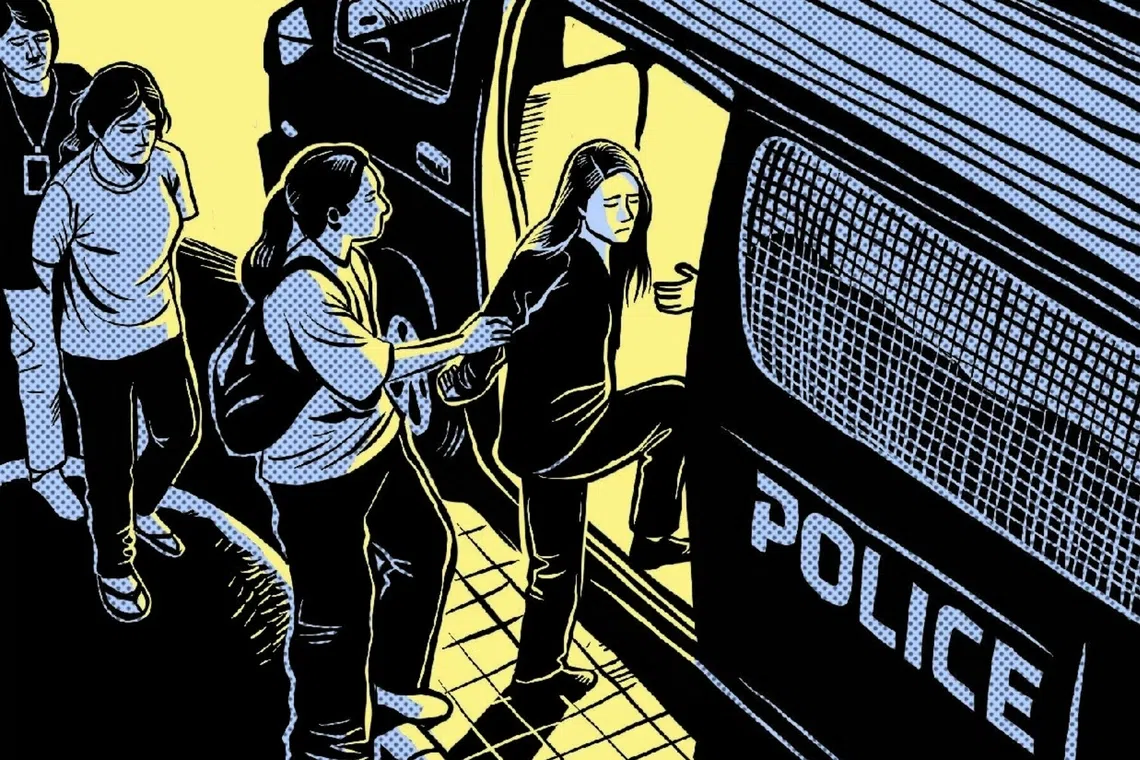It is a humid Tuesday morning in Geylang.
As she does every week, 58-year-old Serene (not her real name) walks the narrow lorongs – Malay for lanes – with a tote bag of chilli guava chips swinging by her side. Near Lorong 16, she spots two women standing outside a row of shophouses.
“I haven’t seen you before,” Serene says in Mandarin. “Did you just arrive?”
One smiles, a little wary. “Last week.”
They chat about food and home towns. The answers are short, until Serene asks how long they plan to stay.
“Just a few weeks,” one says, before adding: “I won’t overstay. Are you a police officer?”
Serene laughs. “No, I work around here,” she says, slipping a packet of chips into the woman’s hand.
After 10 years of these walks, she no longer needs to ask what brings them here. A part-time outreach worker with Operation Mobilisation, a Christian group, she sees her role as simply showing care.
“We’re not here to rescue anyone,” Serene says. “But if someone looks troubled, we might ask if there’s something we can do.”
What she witnesses each week – the quiet exchanges, the guarded smiles, the women who come and go – is part of a much older story.
To understand the work she does today, it helps to trace how the sex trade took root in Singapore, a story that began with the island’s founding as a colony.

According to a 2023 study by the Saw Swee Hock School of Public Health, at any given time, there are approximately 8,030 female sex workers in Singapore.
ST ILLUSTRATION: CHNG CHOON HIONG
The second census in 1826, nine years after Sir Stamford Raffles arrived, counted just 13,750 residents and revealed a stark gender gap: 5,747 Chinese men to 341 Chinese women and 2,208 Indian men to only 40 Indian women. There were 2,501 Malay males and 2,289 Malay females.
The census highlighted Singapore’s growth as a rapidly expanding, male-dominated port city, one with a huge demand for sex workers.
By 1884, Singapore had about 60,000 Chinese men but only 6,600 Chinese women. Of the women, an estimated 2,000 -– mainly Cantonese and Teochew women -– worked as prostitutes. It is believed that as many as 80 per cent of young Chinese girls who arrived in the late 1870s were sold into brothels. A 1990 paper in the Journal of Southeast Asian Studies estimated it as, even then, a multimillion-dollar trade.
Some of the women entered the trade by choice. Many more were pushed into it by poverty or sold by their families. Young migrants from rural China and Japan flowed through ports like Nagasaki and Canton before landing in Singapore’s brothels.
By 1905, Middle Road had earned the nickname “Little Japan”. Official records listed 633 Japanese women working in 109 brothels clustered in the area.
With the trade booming, the colonial authorities abandoned attempts to suppress it outright and pivoted to regulation – licensing brothels, mandating inspections and, via the 1870 Contagious Diseases Ordinance, spelling out operating rules.
This colonial legacy of regulation rather than prohibition continues to shape Singapore’s approach today, creating a complex legal landscape that both acknowledges and restricts the industry.
According to a 2023 study by the Saw Swee Hock School of Public Health, at any given time, there are approximately 8,030 female sex workers in Singapore.
Its researchers used the Network Scale-Up Method, a technique designed to measure hidden or hard-to-reach populations. Instead of surveying sex workers directly, they asked a representative sample of Singapore residents how many people they personally knew who were involved in sex work, then extrapolated the figures based on average social network sizes.
Of these women, around 800 to 1,000 work in more than 100 regulated brothels in Singapore’s main red-light district, Geylang. While there are no official statistics, the figure is drawn from anecdotal accounts by former sex workers, and volunteers who conduct weekly outreach in the area.
Regulated brothels, however, represent only a small slice of the larger picture. An underground economy sprawls far beyond Geylang’s lanes, spilling into massage parlours, KTV lounges, beauty salons, escort agencies and a digital marketplace that runs from private chat channels to subscription platforms like OnlyFans.
Even so, the numbers are porous. The study does not capture male or transgender workers, freelancers operating solo out of rented hotels and apartments, small collectives, or those working under agents who take cuts, making the true size of the industry hard to pin down.
“8,030 is just an estimate,” says Dr Rayner Tan, an assistant professor at the Saw Swee Hock School of Public Health, who was involved in the study.
He notes that due to the stigma surrounding sex work and the fact that most Singaporeans are unlikely to know someone in the trade, the actual number could range from 3,980 to 16,200.
Most of the workers are transitory migrants who enter on tourist visas and leave after a few weeks. Singaporeans and local residents make up only a small fraction. According to Project X – a non-profit organisation that has spent more than a decade offering social, emotional and legal support to sex workers – locals, including permanent residents and those on long-term visit passes, make up just 15 per cent to 20 per cent of Singapore’s sex industry.
Project X’s executive director Vanessa Ho says it is hard to pin down why they enter the trade. Circumstances vary so widely that the term “sex worker” can obscure as much as it reveals. What links these lives is not a single cause but a tangle: debt, caregiving burdens, wage stagnation, weak protections and the blunt fact that the work pays.
“A single mother’s story will be so different from a transgender sex worker’s story. Somebody from Indonesia will have a vastly different story from someone from China or Vietnam. People’s stories are more complex and a lot more nuanced than what we think,” says Ms Ho.

Regulated brothels in Singapore are monitored for health and safety, and workers must undergo regular medical checks. There is also a 100 per cent condom-use policy, although how strictly enforced it is remains unclear.








